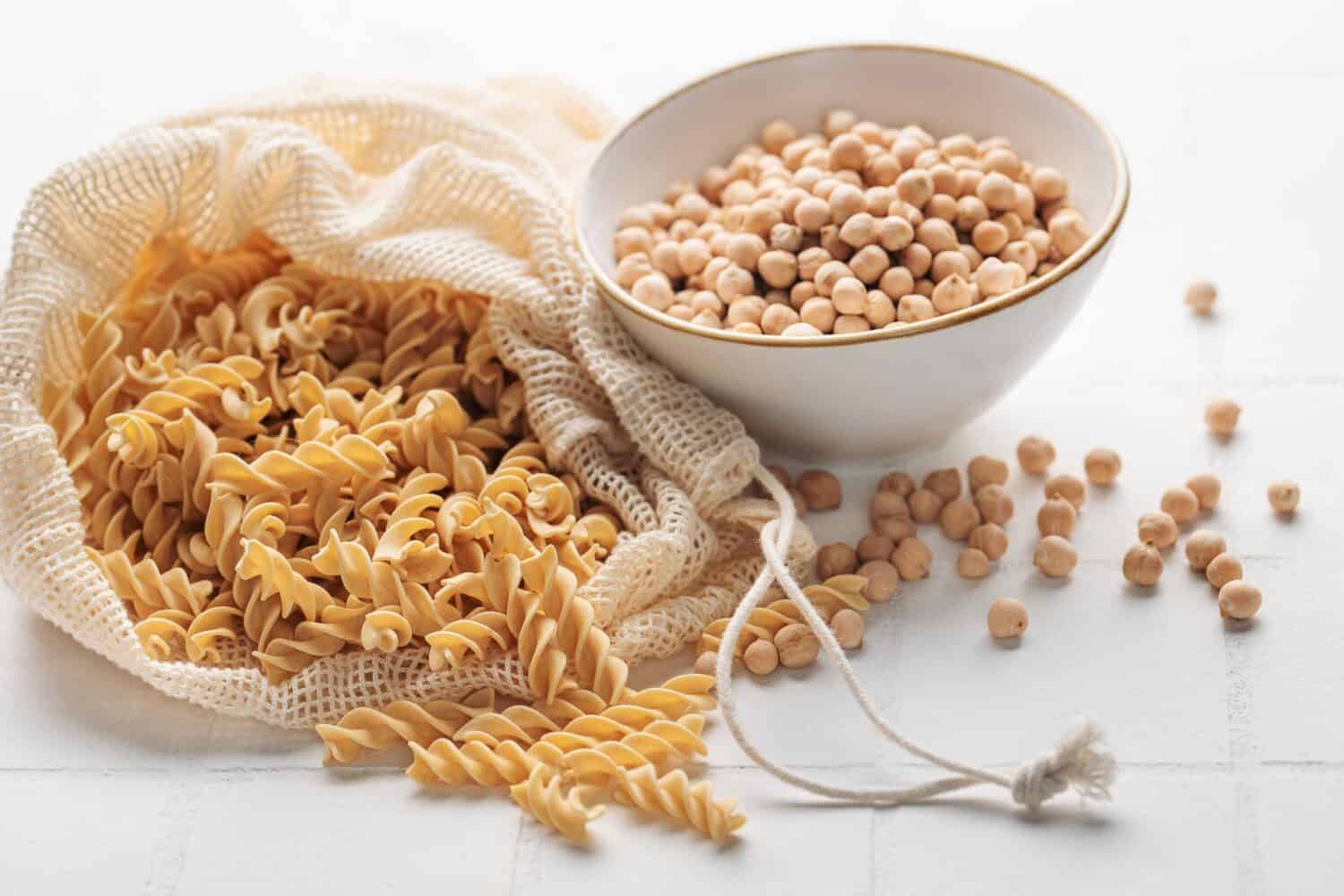There was a time when pasta excitement came only from sauces like marinara or Alfredo. Nowadays, things have evolved. We have various noodle choices, from traditional wheat to rice, spinach, and chickpeas. That's right! Chickpea pasta is now famous for its nutrition and taste. So, the crucial question: Which is better, chickpea pasta or regular pasta?
As we focus more on our health, many wonders if chickpea pasta truly stands out. Is it as healthy as they say? And does it taste good too? Get ready to explore this great debate between these two pasta types.
In this easy-to-follow guide, we'll look at the history of both kinds of Pasta, their nutritional values, taste and texture comparisons, and finally, which should be on your plate. After all, being healthy shouldn't mean giving up flavor or the joy of eating, right?
Let's start this exciting journey and find your new favorite pasta!
Comparing Chickpea Pasta and Regular Pasta
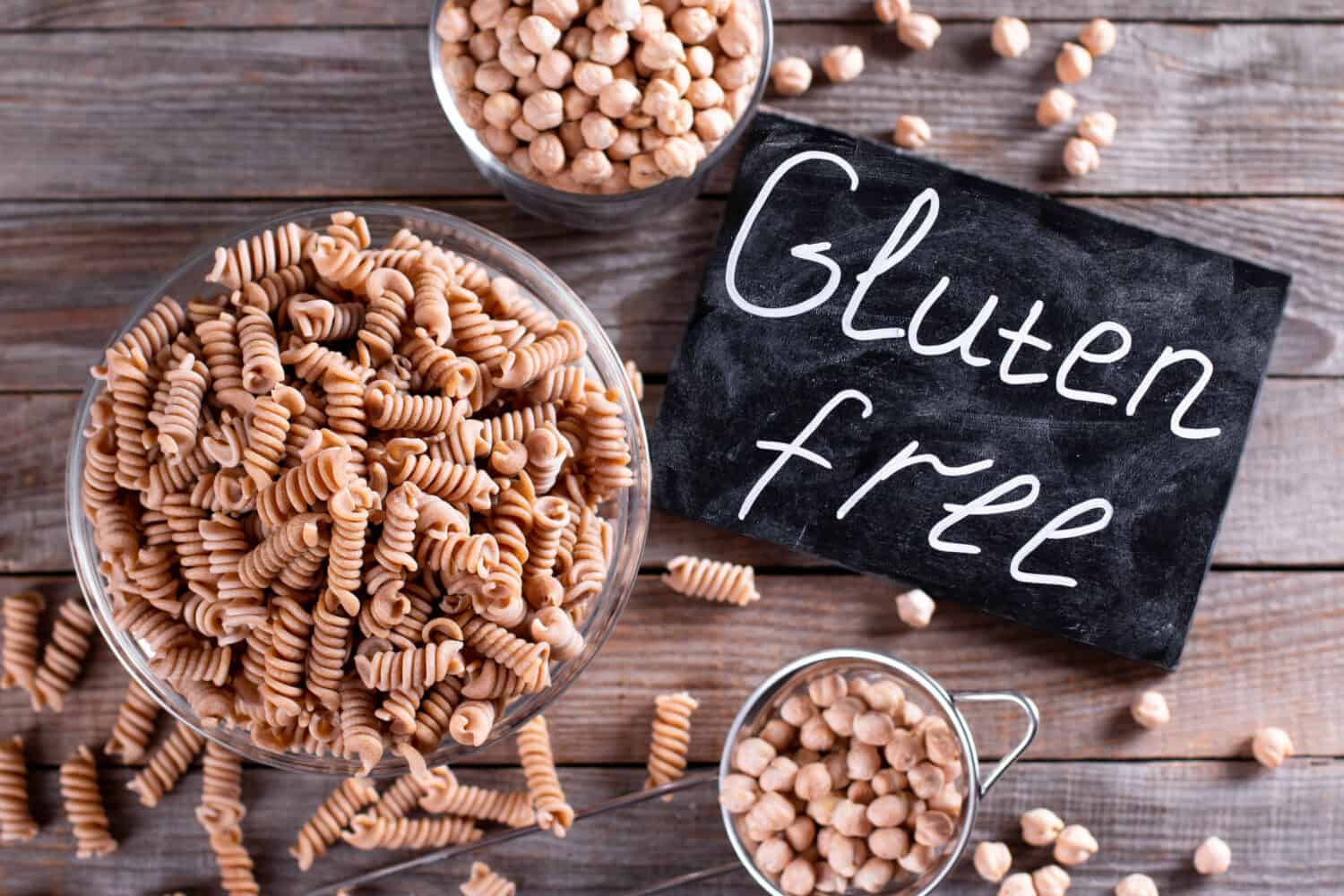
Chickpea pasta is gluten free.
©Ahanov Michael/Shutterstock.com
Let's compare chickpea pasta with regular pasta. We'll examine taste, texture, nutrition, and versatility to find the best option for different preferences.
Taste and Texture Differences
When choosing between chickpea and regular pasta, taste, and texture are essential.
Regular pasta is neutral and goes well with any sauce or ingredient. Its texture can be soft or al dente, depending on cooking time.
Chickpea pasta has a slightly nutty flavor. It pairs well with hearty sauces. The texture is firmer, giving dishes a unique bite.
Nutritional Value Comparison
In the chickpea vs. regular pasta debate, nutrition matters. Comparing their nutritional profiles:
Chickpea pasta has nearly double the protein and triples the fiber of regular pasta. This is perfect for those aiming to boost their protein and fiber intake. Since both varieties have similar calorie counts, controlling portion sizes is essential.
Regular pasta, lower in protein and fiber, can still be part of a balanced diet when combined with nutrient-rich ingredients like lean proteins, vegetables, and healthy fats.
Culinary Versatility and Usage
Finally, let's discuss versatility. Regular pasta is a kitchen staple, pairing well with various sauces and ingredients.
Chickpea pasta works best with robust, hearty sauces and ingredients, such as chunky vegetable marinara or creamy mushroom Alfredo. While less versatile than regular pasta, creativity can make it a star in many dishes.
In conclusion, both chickpeas and regular pasta have unique strengths. The choice depends on personal taste, dietary needs, and culinary goals. Stay tuned for more insights!
The Classic: What is a Regular Pasta
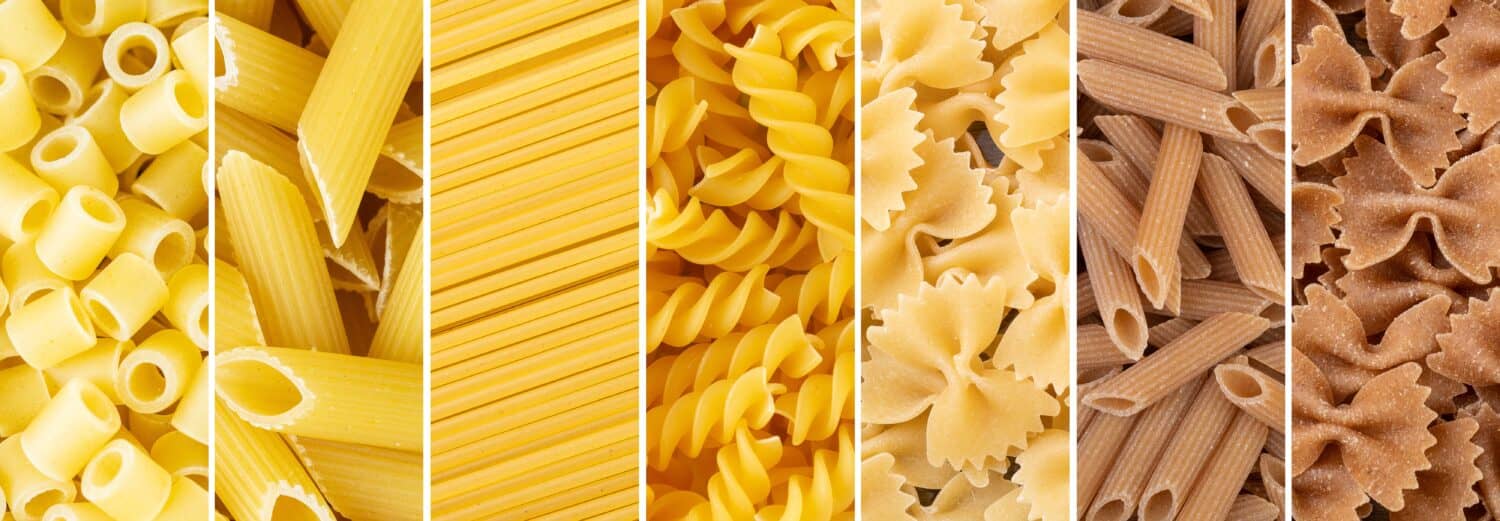
Regular pasta has iron and B vitamins.
©Odu Mazza/Shutterstock.com
Regular pasta, the familiar, twirled treat we've cherished for so long. But are you aware of its roots? Many people aren't. Let's investigate its historical background.
Pasta, at its core, is a blend of water and durum wheat semolina. It made its culinary debut in Italy around the 13th century, though some believe it dates back even further to ancient civilizations. It has evolved into a worldwide sensation, starring in various dishes, from essential spaghetti aglio e olio to indulgent lasagna.
A single pasta serving (2 oz, uncooked) has around 200 calories, 7g protein, and 42g carbs, is low in fat, and provides iron and B vitamins. However, regular pasta has a high refined carb content, which can raise blood sugar levels – something to consider for those monitoring blood sugar or aiming to lose weight.
Interestingly, pasta's high carb content makes it an excellent energy provider. That's why athletes often include it in their diets. However, it's crucial to balance those carbs with other nutrients. Pairing pasta with lean protein and plenty of vegetables is tasty and nutritionally wise.
Now that we've covered regular pasta, let's focus on the newcomer – chickpea pasta. Are you ready to learn if this challenger can compete with our beloved classic pasta? Let's find out!
What is Chickpea Pasta?
Welcome to the enthralling realm of Chickpea Pasta. This innovative option is appearing in stores and catching the attention of health-focused shoppers and food enthusiasts.
The Advent of Chickpea Pasta
Chickpea pasta might seem modern, but chickpeas have a long history. They originated in the Middle East and featured Mediterranean, Indian, and Middle Eastern dishes. Pasta made from them is new, driven by demand for healthier, gluten-free alternatives to traditional pasta.
Why Chickpea Pasta is Trending
What's behind the chickpea pasta trend? In essence, it combines carb-filled comfort with a balanced nutritional profile. It appeals to vegans, gluten-free dieters, and those seeking protein-rich pasta.
Chickpea Pasta: Nutritional Gem
Examining chickpea pasta nutrition reveals its appeal. A 2-ounce portion has about 200 calories, like regular pasta. But it also offers 14 grams of protein – almost double!
Additionally, it contains 8 grams of fiber, compared to 2.5 grams of regular pasta. This fiber aids digestion and promotes fullness – great for weight-watchers. As a bonus, it's gluten-free, ideal for those with gluten sensitivity or celiac disease.
Intrigued? So are we! Chickpea pasta has transformed from a humble legume to a nutrient-packed alternative. How does it fare against regular pasta? Let's discover this in the following section!
Health Implications Explored
Having discussed the sensory and nutritional differences between chickpea pasta and regular pasta, let's explore their health implications. Understanding our food choices' health benefits or drawbacks enables us to make informed decisions. So, let's dive in!
Health Benefits of Chickpea Pasta
Chickpea pasta has many health benefits. Chickpea pasta is protein-rich, ideal for vegetarians, vegans, or anyone seeking more protein. Protein is crucial for repairing tissues and building bones, muscles, skin, and blood.
The high fiber content in chickpea pasta helps digestion, regulates blood sugar, and supports weight control by increasing fullness.
For people with gluten intolerance or celiac disease, it's a delicious, gluten-free alternative to regular pasta, ensuring pasta enjoyment isn't compromised.
Potential Health Drawbacks of Regular Pasta
While regular pasta isn't inherently unhealthy, its high carbohydrate content and significantly refined carbs can concern some. A diet rich in refined carbs may cause blood sugar level fluctuations, posing problems for people with diabetes.
Furthermore, regular pasta's low fiber content may not provide lasting fullness like chickpea pasta, potentially leading to overeating. Thus, portion control is crucial for regular pasta consumption.
Additionally, the high glycemic index of regular pasta can cause a rapid spike in blood sugar levels, whereas chickpea pasta has a lower glycemic index, resulting in more stable blood sugar levels and sustained energy throughout the day.
Incorporating Chickpea Pasta in a Balanced Diet
Including chickpea pasta in a balanced diet involves mindful serving choices. Combine chickpea pasta with vibrant veggies, lean proteins, and wholesome fats to create a nutrient-rich meal. A tasty example is mixing chickpea pasta with roasted vegetables, grilled chicken or tofu, and olive oil for a balanced, scrumptious dish.
Choosing chickpea pasta and regular pasta should depend on personal health goals, dietary restrictions, and taste preferences. Next, examine public and expert opinions on the chickpea pasta vs. frequent Pasta debate.
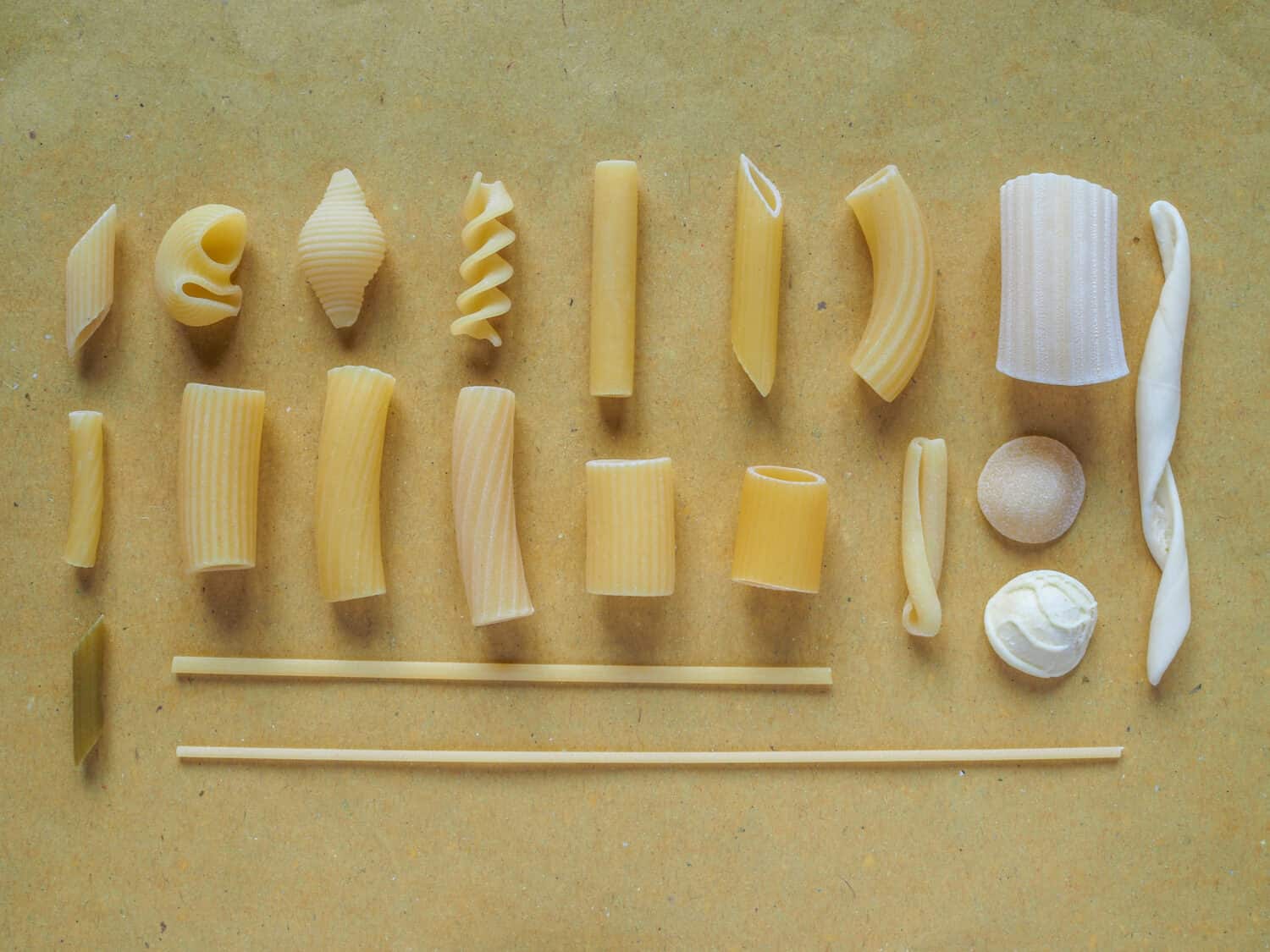
Regular pasta comes in many difference shapes and sizes.
©Claudio Divizia/Shutterstock.com
The Verdict – Chickpea Pasta vs. Regular Pasta
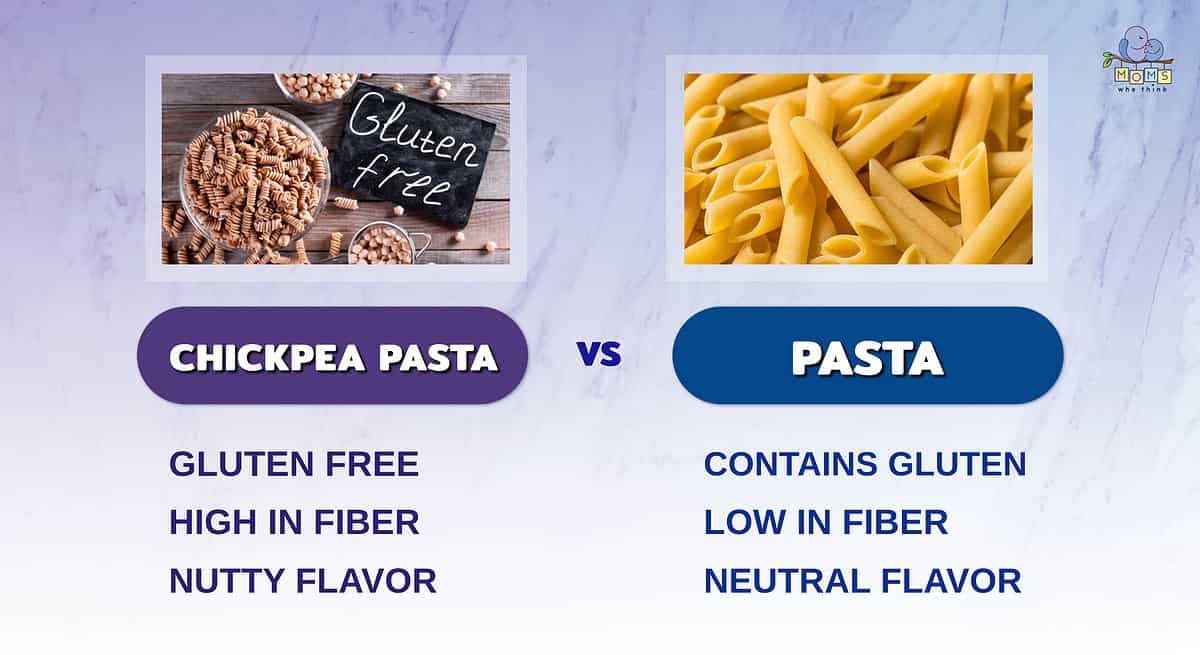
- Chickpea pasta is much higher in fiber than regular pasta; its high fiber content will boost your digestive system!
- Regular pasta has a neutral flavor, while chickpea pasta has a nutty flavor that some may find hard to get used to.
- Chickpea pasta doesn't contain gluten, unlike regular pasta. This makes it a great choice for those who can't digest gluten.
We've compared chickpea pasta and regular pasta regarding taste, texture, nutrition, health implications, and public opinion. So, what's the final verdict?
While regular pasta remains a cherished classic with its neutral taste and culinary versatility, chickpea pasta emerges as the healthier option. Chickpea pasta, high in protein and fiber, supports a healthy diet. Perfect for gluten-free eaters, raising protein intake, and regulating blood sugar.
The choice depends on taste, dietary needs, and objectives. Savor your preferred pasta, knowing you've made an intelligent decision.
Looking for a new pasta recipe to try? Give this one a go:
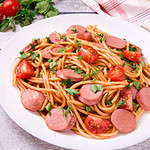
Pasta with Sausage and Cherry Tomatoes
- Yield: Serves 4
Ingredients
7 ounces whole wheat linguine
Olive oil cooking spray
½ pound pork sausages, removed from their casings and crumbled
2 garlic cloves, minced
Pinch of hot pepper flakes
16 cherry tomatoes
1 teaspoon chopped fresh thyme
Salt and pepper
1 teaspoon extra virgin olive oil
1 tablespoon chopped fresh parsley
Instructions
1. Prepare linguine according to package directions.
2. Meanwhile, spray a large nonstick skillet with olive oil cooking spray and place over medium-high heat. Add the sausage and stir occasionally for about 3 minutes, until the meat begins to brown.
3. Add the garlic, pepper flakes, tomatoes, and thyme. Cook until the sausage turns dark brown and the tomato skins have burst, about another 3 to 4 minutes. Season with salt and pepper.
4. Drain the pasta and toss with oil. Top the pasta with sausage and tomato mixture, stir to combine, sprinkle with parsley. Serve immediately.
Nutrition
- Serving Size: Per serving
- Calories: 283
- Sodium: 420mg
- Fat: 19g
The image featured at the top of this post is ©Olena Rudo/Shutterstock.com
